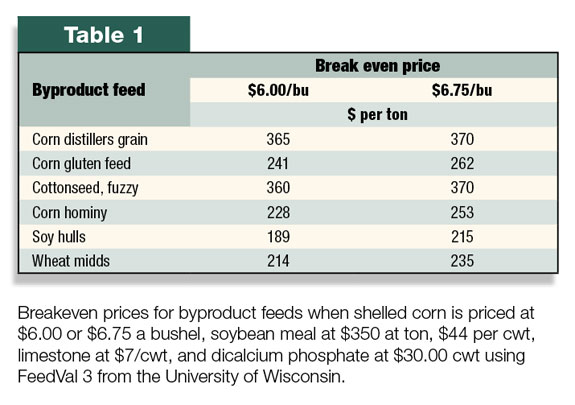Dairy managers continue catching up economically after a disastrous 2009 and 2010 business year, said Mike Hutjens, University of Illinois professor of animal sciences emeritus. “Milk producers need $17 per 100 pounds to cover feed, variable, fixed and labor costs with a modest return on assets,” Hutjens said. “Currently, milk prices have been favorable, but dairy managers need a full year of these margins to replace lost equity in 2009-2010.” Several factors will be critical to maintain a successful 2011 dairy business model.
Hutjens said milk prices will depend on supply and demand, with more than 13 percent of current U.S. milk solids being exported. World demand is important to keep supply and demand balanced, which may be impacted by the financial problems in some European countries and unrest in the Mideast.
“Corn price will also impact profit margin,” he said. “Late planting of corn in the Midwest, flooding along major rivers such as the Mississippi, and drought in the Southwest will impact corn and feed price. Higher corn prices will raise the price of corn silage, forages and byproduct feeds.”
Energy costs (price of oil) will impact fertilizer, fuel and energy costs, he said.
In order to overcome these challenges, Hutjens said dairy managers will need to focus on areas that they directly control on their dairy farms. Milk price, corn price and oil prices are not controlled by the dairy manager.
Hutjens suggested the following factors will be important for dairy farms to maintain a profit this year.
1. Keep total feed cost per 100 pounds of milk less than $7 per hundredweight (cwt) (for lactating cows, not dry cows and replacement heifers).
2. Forage quality will be critical to reduce purchased feed costs. Alfalfa/grass forage should be more than 150 relative forage quality (RFQ), high yield per acre, and more than 20 percent crude protein. Corn silage should be more than 30 percent starch, high in dry matter yield per acre and more than 55 percent neutral detergent fiber digestibility.
3. Feed inventory should be calculated, planned and/or stored to meet 2011-2012 herd needs. If more acres of corn silage or a summer annual are needed, make that decision now.

4. Byproduct feeds can be an excellent source of economic feed nutrients. Table 1 lists the breakeven value of byproduct feeds. If you can purchase these feeds below the breakeven price, it is cheaper than nutrients provided by shelled corn, soybean meal and fat/oil.
5. Maintaining high milk yield results in more income, potential profit and feed efficiency. The following guidelines can be used to evaluate a dairy herd.
• Feed cost per pound of dry matter under 12 cents
• Feed efficiency more than 1.4 pounds of milk at 3.5 percent fat per pound of dry matter consumed
• Income over feed costs greater than $10 per cwt
6. High premiums for milk with higher milk protein and fat content and lower somatic cell counts can add 50 cents to $1.50 per cwt
7. Getting cows pregnant will maintain milk production as cows remain at higher levels of milk yield (target an average 170 days in milk). PD
—Excerpts from ACES News



